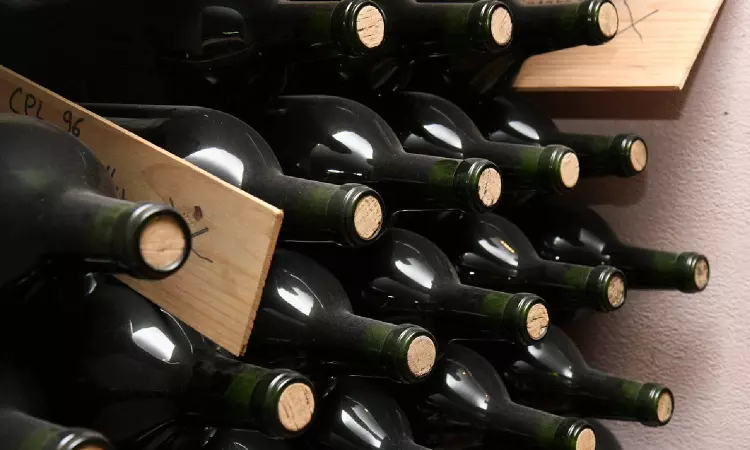Bordeaux wine snobs have a point, says computer model
Dr. Pouget is trying to apply chemical precision to this je ne sais quoi

Representative image.
• VIRGINIA HUGHES
NEW YORK: In the Bordeaux region of southwest France, scores of vineyard estates transform finicky grapes into bold blends of red wine. Some bottles sell for thousands of dollars each. Prestigious chateaus boast about the soil, microclimate and traditional methods that make their own wine superior, an inscrutable mix known as terroir. “It’s one of those terms that the wine industry likes to keep a bit mysterious, part of the magic of wine,” said Alex Pouget, a computational neuroscientist at University of Geneva.
Dr. Pouget is trying to apply chemical precision to this je ne sais quoi. In a study published Tuesday in the journal Communications Chemistry, he and his colleagues described a computer model that could pinpoint which Bordeaux estate produced a wine based only on its chemical makeup. The model also predicted the year in which the wine was made, known as its vintage, with about 50 percent accuracy.
Although wine connoisseurs often claim to be able to distinguish among wines from top estates, they rarely do blind taste tests, he said. “People have made those claims for decades, but we’ve never actually had an objective measurement that showed that this was true,” he said.
Dr. Pouget grew up in Paris in a family that drank only Bordeaux (“You pretend Burgundy does not exist,” he said). As a young neuroscientist in the late 1980s, he studied the brain with machine learning, a type of artificial intelligence that identifies patterns in large data sets. He believed that these methods could be useful for the wine industry, but didn’t get around to testing the idea for 30 years. He teamed up with Stephanie Marchand from the Institute of Vine and Wine Science in Bordeaux, who had created a database of 80 wines of various vintages from seven chateaus. The database held the chemical signatures of each wine gleaned from gas chromatography, an old and inexpensive method for breaking substances down into their molecular components.
The researchers trained an algorithm to seek common patterns in the chemical fingerprints of the wines. They were shocked by the results: The model grouped the wines into distinct clusters that matched with their geographical locations in the Bordeaux region. This showed that the particularities of each estate had drastically influenced the chemistry of the wines produced there, just as winemakers have claimed for centuries.
The estates gave the researchers permission to study their wines on the condition that they not be named. Dr. Pouget said that all of the wines were part of the famous 1855 Bordeaux classification, a ranking instituted by Napoleon III to promote the best wines of Bordeaux.
Dr. Pouget was surprised that the winemakers did not want to disclose their names, as the study’s findings reinforced the notion that their wines were special. “I have scientific evidence that it makes sense to charge people money for this because they are producing something unique,” he said, laughing.
Independent researchers said that the study was part of a wave of recent research using machine learning to decipher terroir. “This is where the field is headed and needs to head to make sense of an abundance of data,” said David Jeffery, an expert in wine chemistry at the University of Adelaide in Australia.



